

Series Of Good Dan Pink Videos To Use With Students. I’ve written a lot about Daniel Pink’s writings on motivation over the years.
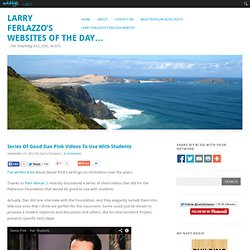
Thanks to Pam Moran, I recently discovered a series of short videos Dan did for the Patterson Foundation that would be good to use with students. Actually, Dan did one interview with the Foundation, and they elegantly turned them into bite-size ones that I think are perfect for the classroom. Some could just be shown to provoke a student response and discussion and others, like his One Sentence Project, presents specific next steps: Here’s the one on The One Sentence Project, and here are also links that give more information on it: What’s your sentence?
What’s your sentence? This next video isn’t part of the same series, but it is Dan’s official “introduction” to the One Sentence Project, so I thought I’d add it: Two questions that can change your life from Daniel Pink on Vimeo. Engagement as a Reading Intervention. What would happen if, rather than focusing on teaching reading strategies, we focused instead on getting students engaged?
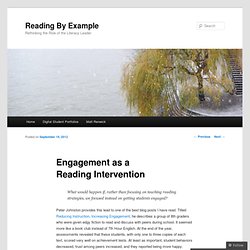
Peter Johnston provides this lead to one of the best blog posts I have read. Titled Reducing Instruction, Increasing Engagement, he describes a group of 8th graders who were given edgy fiction to read and discuss with peers during school. It seemed more like a book club instead of 7th Hour English. When You Understand... - ateacherswonderings's posterous.
Student Voice. Extreme Schools in an Extreme Interview. Posted by Eric Jensen in Brain-Based Teaching on 08 15th, 2012 | no responses Instead of our usual featured “Extreme School” (of which we have many), we are featuring an unusual question-answer session.
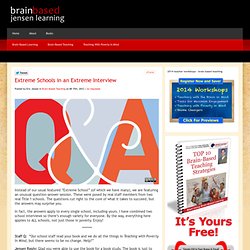
These were posed by real staff members from two real Title 1 schools. The questions cut right to the core of what it takes to succeed, but the answers may surprise you. In fact, the answers apply to every single school, including yours. I have combined two school interviews so there’s enough variety for everyone. Staff Q: “Our school staff read your book and we do all the things in Teaching with Poverty In Mind, but there seems to be no change. Jensen Reply: Glad you were able to use the book for a book study. If you’re NOT seeing miracles, get a second opinion. Staff Q: “How can a school ensure teachers implement the changes needed without it being done in a top-down manner?” Jensen Reply: The question you’re asking is very legitimate and common. The reasons are many. Finland Rethinks Factory-Style School Buildings.
Published Online: July 6, 2012 Students enter the Kirkkojärvi School in Espoo, Finland.
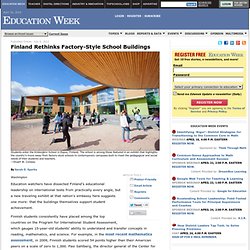
The school is among those featured in an exhibit that highlights the country's move away from factory-style schools to contemporary campuses built to meet the pedagogical and social needs of their students and teachers. —Stuart W. Conway. Brother Mike: Reimagining Mentorship for a Digital Age, One Beat at a Time. Before stepping foot inside YOUmedia, an innovative, 5,500-square-foot multimedia youth learning space at the Chicago Public Library, “Brother” Mike Hawkins never took any particular interest in slam poetry, nor did he consider himself a slam poet.

That all changed when he began forming relationships with the program’s teens in 2009. “They opened me up to this whole new world of slam poetry where youth could freely express themselves. We went from offering a simple poetry workshop to seeing how we could utilize the physical space so it had more of a community-effect,” Brother Mike said. “We developed this whole new group of poets, artists, and DJs that never would have come together had it not been for that one unifying event.” That one unifying event turned into many, and after a short while, Brother Mike realized that the process of learning, when cultivated in its most natural state -- the peer-mentor relationship –- could not flourish in a one-dimensional setting. Connected Learning. Every Student Response Strategies « LessonCast. True implementation of personalized learning in schools requires a shift in the roles of educators and a shift in educator professional learning.
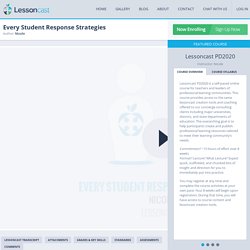
This course examines the evolving role of teachers incorporating personalized learning experiences in the classroom. Taking a close look at what personalized learning is and isn’t, participants create resources to support teacher roles as facilitator, assessor, instructional designer, content curator, coach, and advisor, and family-school collaborator. Lessoncast believes in personalized professional learning. Several modules have assignment options. Participants may choose between the assignments according to which one is more applicable for implementing personalization in their learning environment.
While the course opens on July 21 (8:00 am EST), you may register at any time and complete the course activities at your own pace.